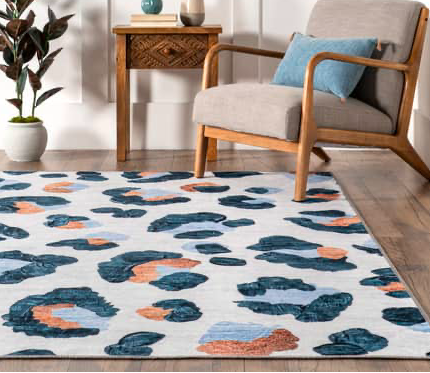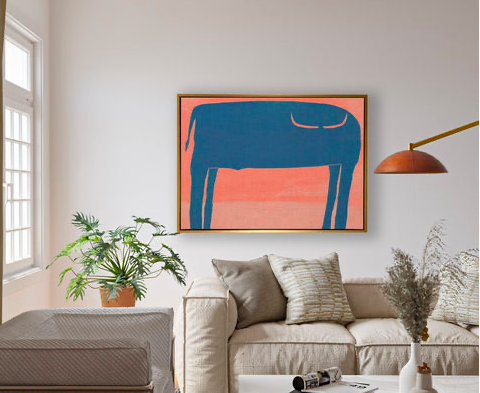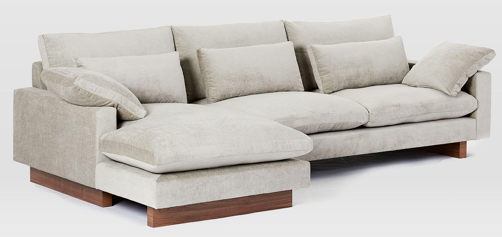The Formula for a Well-Designed Room
- Denise Tennant

- Mar 9, 2023
- 3 min read
My two passions in life are interior design and fashion. Unsurprisingly, there are many parallels between the two.
Many years ago, I had a small business as a personal wardrobe stylist for everyday women. My goal was always to teach my clients how to create amazing outfits on their own. I even taught a course on personal style. In order to break down something that came very naturally to me into information that someone who struggles with the topic can implement, I needed to identify a formula that anyone could follow when getting dressed.
Because I can put an outfit together that looks stylish and polished without really thinking about it, I knew I’d need to do some concrete data gathering and research. I paid attention to not only to the process in which I would use to put together outfits for myself and clients, but also searched for themes while looking at photos of stylish outfits in magazines, on Pinterest, TV, etc. I jotted down the numbers of colors, patterns, and textures I saw in single outfits, shapes of garments and how they played together, the style descriptions of different pieces of an outfit, and so on. What emerged was an understanding of the elements it takes to create visual interest, and the ways in which one can create cohesion of the pieces they put together.
I distilled the findings down to a couple different factors to consider. How visually “interesting” certain pieces were was described by their color, pattern, texture, or shape (or lack thereof) and categorized into statement pieces, basics, and support pieces. Finally, a point system was applied to each category and a rule for generating at least 3 “points” per outfit was established.
When I started professionally decorating homes, I set out on a similar journey to identify the themes that emerge when putting together a well-designed space. Like fashion, there are no RULES to designing something that makes you personally feel great. There are only guidelines that help you create a look with wide-reaching appeal. Also like with clothing, furniture and décor can be categorized into statement, basic, and support pieces.
Statements, Basics, and Support Pieces
STATEMENTS
An example of a statement piece would be something that is either very bold (think a modern wallpaper or bright patterned area rug) or something that is unusual and eye-catching like a large sculpture or pink chair).
BASICS
Basics are your solid, neutral colored furniture pieces, textiles, and accessories.
SUPPORT PIECES
Support pieces fall somewhere in between basics and statements. They may not be as eye-catching as a statement piece, but they add an element of pattern, texture, or surprise. As an example, sequined throw pillows, geometric print curtains in subdued colors, or a lamp with a unique shape.
The formula:
The amount of pieces needed for a space will for sure vary depending on the size of the room you’re working with and your personal preference on the minimalism-maximalism spectrum. However, what follows are some guidelines that can help when selecting furniture and décor in order to create enough (but not a chaotic amount of) visual interest.
1. At least one statement piece
2. Large furniture pieces that typically fall into the “basic” category and coordinate with the statement piece(s) but are not an exact match with each other (i.e. do NOT buy a matching furniture set). Instead, do something like one of the following:
a. Sofa and loveseat/chairs in SAME color, different textures (i.e. Cream microfiber sofa and cream leather chairs)
b. Sofa and loveseat/chairs in DIFFERENT color, same textures (i.e. Navy velvet sofa and turquoise velvet chairs)
c. Sofa and loveseat/chairs in DIFFERENT color, different textures (i.e. Navy velvet sofa and turquoise linen chairs)
3. Pillows, rug, art, draperies in colors that are represented in your statement piece, mixing in some with patterns and/or unique details about them. These are typically your support pieces
4. Accent furniture and accessories that add personality or function. In a family room, a chess set for example can be a functional and beautiful accessory and a storage bench in a bright fabric can add form and function as well. These are typically support pieces as well
Vary the colors and textures of your tables, shelves, and storage pieces for a high-impact look, but be sure to stick to no more than 4 colors in a room including your neutrals. See this post for the basics on defining a color scheme.
As you go about designing, it’s easiest to start with your statement piece…something you truly LOVE. It will be the inspiration for the rest of your design. So many rooms lack a statement piece, and by starting there, you’ll be well on your way towards achieving that designer look.































Comments